Essential Air Compressor Parts and Replacement Components: Selection Guide and Applications
Table of Contents
- Introduction to Air Compressor Replacement Parts
- Essential Replacement Parts for Air Compressors
- Replacement Parts Selection Guide by Compressor Type
- Preventive Maintenance: When to Replace Components
- Compatibility and OEM vs. Alternative Parts
- Industrial Applications and Specific Considerations
- Frequently Asked Questions about Air Compressor Parts
Introduction to Air Compressor Replacement Parts
Air compressor replacement parts are fundamental components that ensure optimal performance, energy efficiency, and longevity of these essential machines in industrial environments. A well-maintained compressor with quality parts not only reduces the risk of unexpected breakdowns but also optimizes energy consumption and maintains compressed air quality within required parameters.
In the American industrial landscape, where air compressors are vital for countless production processes—from automotive manufacturing to food processing—having a reliable supply of quality replacement parts is crucial to avoid costly downtime. Proper selection of replacement parts should be based on factors such as compressor type, specific application, operating conditions, and maintenance requirements established by the manufacturer.
This article provides a comprehensive guide to the most important replacement parts for air compressors, helping you identify, select, and purchase the right components to keep your pneumatic system running optimally.
Essential Replacement Parts for Air Compressors
To better understand the maintenance needs of an air compressor, it's essential to know the different types of replacement parts available and their function within the system. Below, we detail the most critical components that typically require periodic replacement:
Filters and Filtration Elements
Filters are critical components that protect the compression system and ensure compressed air quality. There are several types according to their function:
- Intake air filters: Protect the compressor from external particles. A clogged filter can cause overheating and reduce compressor efficiency by 5-10%.
- Oil filters: Essential in lubricated compressors, they trap impurities and metal particles that could damage internal components. Quality oil filters can significantly extend the compressor's service life.
- Line filters: Installed in the air distribution system, they remove contaminants such as water, oil, and particles. Proper filtration is essential for applications requiring high-purity air.
- Air filter cartridges: Replaceable elements that must be changed according to manufacturer specifications. Quality air filter cartridges ensure optimal system protection.
Key Takeaways: Compressor Filters
- Regular filter maintenance can reduce energy consumption by up to 10%.
- Dusty environments require more frequent changes of intake filters.
- Use filters of appropriate quality based on the specific industrial application.
Oils and Lubricants
Oil in a compressor serves multiple functions: it lubricates, seals, cools, and protects against corrosion. Selecting the right lubricant is crucial for equipment performance and service life:
- Mineral oils: Economical option for standard applications with shorter change intervals.
- Synthetic oils: Offer greater oxidation resistance, better performance at extreme temperatures, and longer service life. Specific compressor oils are formulated to withstand the particular conditions of these machines.
- Screw compressor oils: Specifically formulated to withstand the high temperatures and pressures of screw compressors, with anti-foaming and water separation properties.
- Piston compressor oils: Designed to provide adequate lubrication in piston compressors, where moving parts are subject to greater mechanical wear.
It's important to note that manufacturers like Atlas Copco develop specific oils for their equipment, such as the LE Series from Atlas Copco, optimized to maximize the performance of their compressors.
Oil Separators
Oil separators are critical components in lubricated compressors, especially screw compressors. Their main function is to separate oil from compressed air before it exits the compressor:
- Separator elements: Filter oil from compressed air, allowing the lubricant to return to the system. Quality separators can capture up to 99.9% of oil.
- Separation kits: Include all necessary components for complete maintenance of the separation system.
- Separators for specific applications: Designed for particular environments or more demanding air purity requirements.
A deteriorated oil separator can cause increased oil consumption, contamination of the pneumatic system, and reduced energy efficiency of the compressor.
Electrical and Control Components
Electrical and control systems are essential for the safe and efficient operation of the compressor:
- Pressure switches: Control the compressor's load/unload cycle. Precise pressure switches are essential for optimal operation.
- Temperature sensors: Monitor generated heat and protect the compressor against overheating.
- Solenoid valves: Control the flow of air and oil in various parts of the system.
- Controllers and displays: Allow for programming and monitoring of the compressor.
- Variable frequency drives: In VSD compressors, they adjust motor speed according to air demand.
Proper maintenance of these components is crucial for energy efficiency and prevention of critical system failures.
Maintenance Kits
To facilitate preventive maintenance, many manufacturers offer kits that include all the necessary replacement parts for scheduled servicing:
- Service kits for specific hours: Contain components that should be replaced after certain operating hours (2000, 4000, 8000 hours, etc.).
- Service filter kits: Include all necessary filters for complete maintenance.
- Repair kits: Contain components for specific repairs, such as gaskets, seals, and valves.
These kits ensure that the correct and compatible replacement parts are used, simplifying the maintenance process and reducing downtime.
Replacement Parts Selection Guide by Compressor Type
Each type of compressor has its own characteristics and, therefore, specific replacement part needs. Below, we detail the particular considerations for the main types of compressors used in American industry:
Piston Compressors
Piston compressors are common in workshops and small industries, characterized by their robustness and relatively simple maintenance:
- Pistons and rings: Subject to wear from friction, they should be checked periodically.
- Intake and discharge valves: Critical components that typically require replacement every 2-3 years depending on use.
- Drive belts: In belt-driven models, tension and wear should be checked regularly.
- Specific oil: Oil-lubricated piston compressors require lubricants with enhanced anti-wear properties.
- Gaskets and seals: Essential for preventing air and oil leaks.
For specific brand compressors like Atlas Copco, there are replacement parts adapted to each model, such as those available for the Automan AF series or LF Series oil-free compressors.
Screw Compressors
Screw compressors are the preferred option in medium and large industries due to their efficiency and continuous operation:
- Rotors and bearings: Critical components that require precise lubrication and specialized maintenance.
- Oil separators: Vitally important in these compressors, they must be replaced according to manufacturer specifications (generally every 2000-4000 hours).
- Oil filters: Essential for keeping the lubrication system clean.
- Minimum pressure and thermostatic valves: Regulate system pressure and temperature.
- Synthetic oil: Screw compressors like the Atlas Copco GA or GX models require specific oils for optimal performance.
In screw compressors with VSD (Variable Speed Drive) technology, electronic components such as inverters and controllers also require specialized maintenance.
Key Takeaways: Screw Compressors
- Oil separators are critical for air quality and energy efficiency.
- Specific synthetic oil can extend maintenance intervals up to 8000 hours.
- Electronic components in VSD models require specialized inspections.
Scroll Compressors
Scroll compressors are an increasingly popular option for applications requiring oil-free air:
- Fixed and orbiting scrolls: The heart of the compressor, manufactured with high precision.
- Seals and gaskets: Critical for maintaining compression and preventing leaks.
- Bearings: Support the orbital movement of the moving scroll.
- Cooling fans: Essential for maintaining operating temperature.
These compressors typically require less maintenance than other types, but when they need replacement parts, these tend to be more specialized and precise.
Preventive Maintenance: When to Replace Components
A well-structured preventive maintenance program is essential to maximize compressor life and minimize operating costs. Below is a general guide on the replacement frequency of major components:
| Component | Recommended Replacement Frequency | Signs of Deterioration | |
|---|---|---|---|
| Air filter | 500-2000 hours (depending on environment) | Increased energy consumption, reduced pressure | |
| Oil filter | 1000-2000 hours | Reduced oil pressure | Reduced oil pressure, visible contamination |
| Oil | 2000-8000 hours (depending on type) | Dark color, burnt smell, analysis outside parameters | |
| Oil separator | 2000-4000 hours | Increased oil consumption, presence of oil in the air | |
| Belts | 4000-8000 hours | Visible cracks, wear, abnormal noise | |
| Valves | 8000-12000 hours | Loss of efficiency, abnormal noises | |
| Complete service kits | According to manufacturer specifications | Operating hours fulfilled |
It's important to note that these are general guidelines, and specific manufacturer recommendations should always prevail. Factors such as ambient air quality, operating temperature, duty cycle, and load can significantly affect these intervals.
Using complete service filter kits ensures that all filtration elements are replaced simultaneously, optimizing system performance.
Compatibility and OEM vs. Alternative Parts
The selection between original manufacturer (OEM) parts and compatible alternatives is an important decision that affects both performance and maintenance costs:
Original (OEM) Parts
- Advantages: Guarantee of perfect compatibility, materials and specifications identical to the originals, manufacturer backing.
- Considerations: Higher initial cost, sometimes limited availability for older models.
Compatible Parts
- Advantages: Lower cost, greater availability, upgrade options in some cases.
- Considerations: Variability in quality, possible compatibility issues with critical components.
For premium brand compressors like Atlas Copco, original parts for series such as GA or GX are specifically designed to maintain optimal equipment performance.
A balanced strategy may be to use original parts for critical components (compression elements, separators, controllers) and consider quality compatible alternatives for more generic elements (some filters, standard belts, etc.).
Industrial Applications and Specific Considerations
Replacement part needs vary significantly depending on the industrial application of the compressor. Below, we highlight specific considerations for various sectors:
Food Industry
- Requires maximum quality air, free of oil and contaminants.
- Oil-free compressors are common.
- Additional filtration with food-grade elements.
- Corrosion-resistant materials for environments with frequent cleaning.
Pharmaceutical Industry
- Extremely high air purity standards.
- Medical-grade filters and air quality monitoring systems.
- Documentation and traceability of all replacement parts used.
Automotive Industry
- High demand for compressed air with variable cycles.
- VSD compressors are common, requiring specialized maintenance.
- Robust filtration systems for environments with metal particles and oils.
Workshops and Small Industries
- Piston compressors with more frequent but less complex maintenance needs.
- Replacement parts such as pumps for piston compressors and valves are the most in demand.
- Complete repair kits to facilitate on-site maintenance.
In each case, it's essential to consider the specific environmental conditions (temperature, humidity, presence of contaminants) and air quality requirements to select the most appropriate replacement parts.
Frequently Asked Questions about Air Compressor Parts
Frequently Asked Questions about Air Compressor Replacement Parts
Conclusion: The Importance of Quality Replacement Parts
Proper selection of replacement parts for air compressors is a determining factor in the reliability, efficiency, and service life of these essential machines. Beyond the initial cost, it's essential to consider the total cost of ownership, where component quality plays a crucial role.
At Pneumatig, we understand that each compressed air system has specific requirements depending on its application, environment, and type of compressor. Therefore, we offer a wide range of high-quality original and compatible replacement parts for all major brands, including Atlas Copco, WAN, and other leading manufacturers.
A well-structured preventive maintenance program, using quality replacement parts and following manufacturer recommendations, not only minimizes the risk of unexpected breakdowns but also optimizes energy consumption and significantly extends the compressor's service life, resulting in a lower total cost in the long term.
For any questions about selecting the right replacement parts for your specific compressor, our technical team is at your disposal to provide you with specialized advice and ensure that your compressed air system operates with maximum efficiency and reliability.

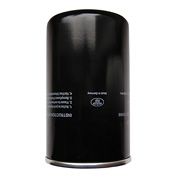
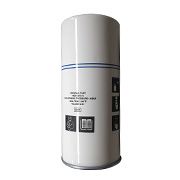
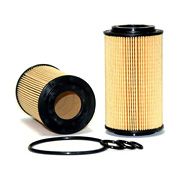
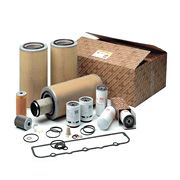
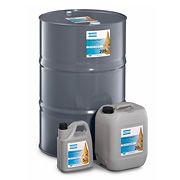
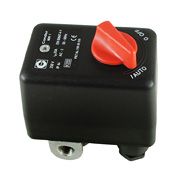
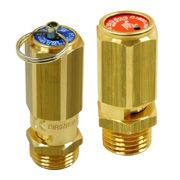
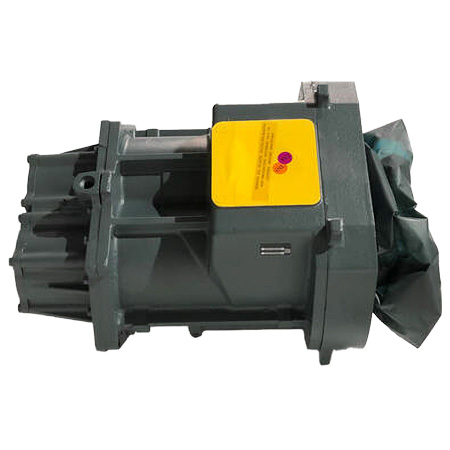

Login and Registration Form